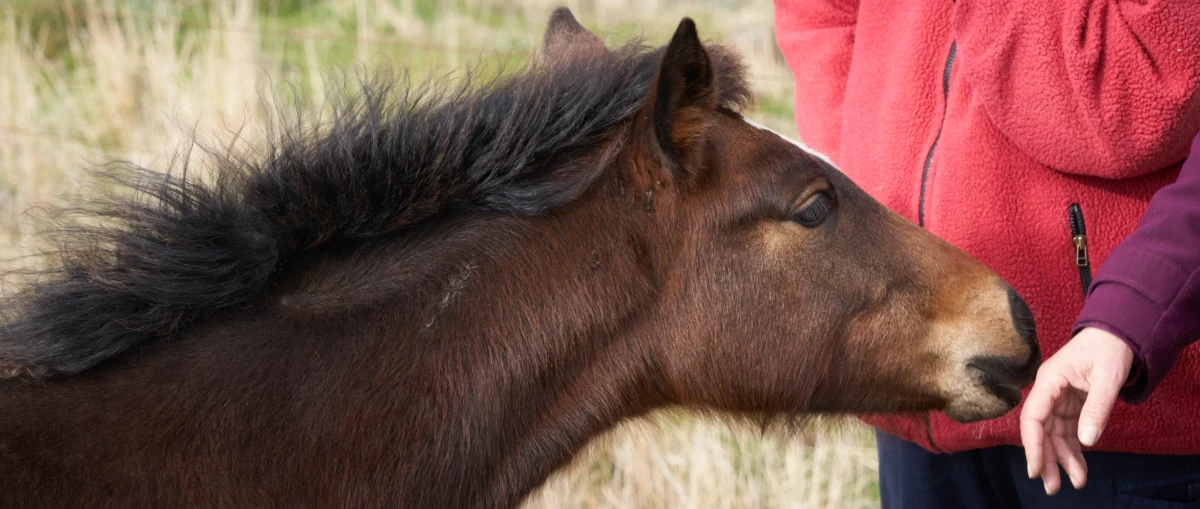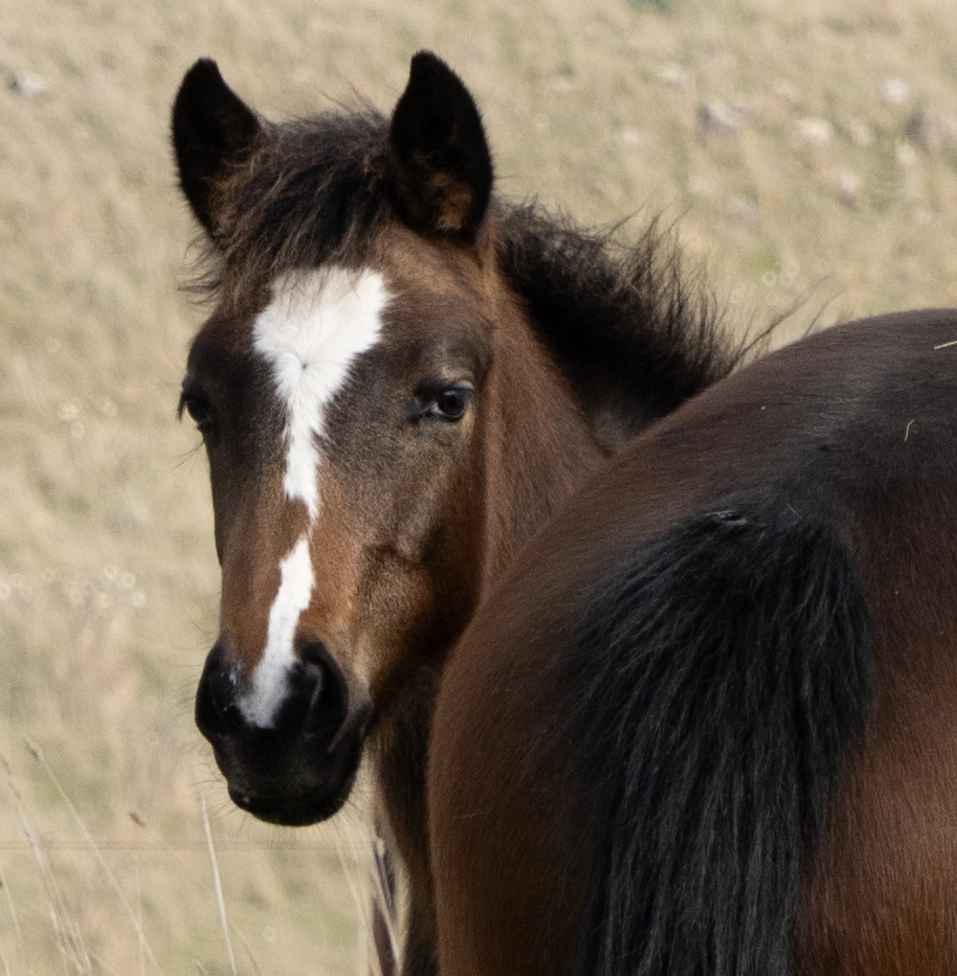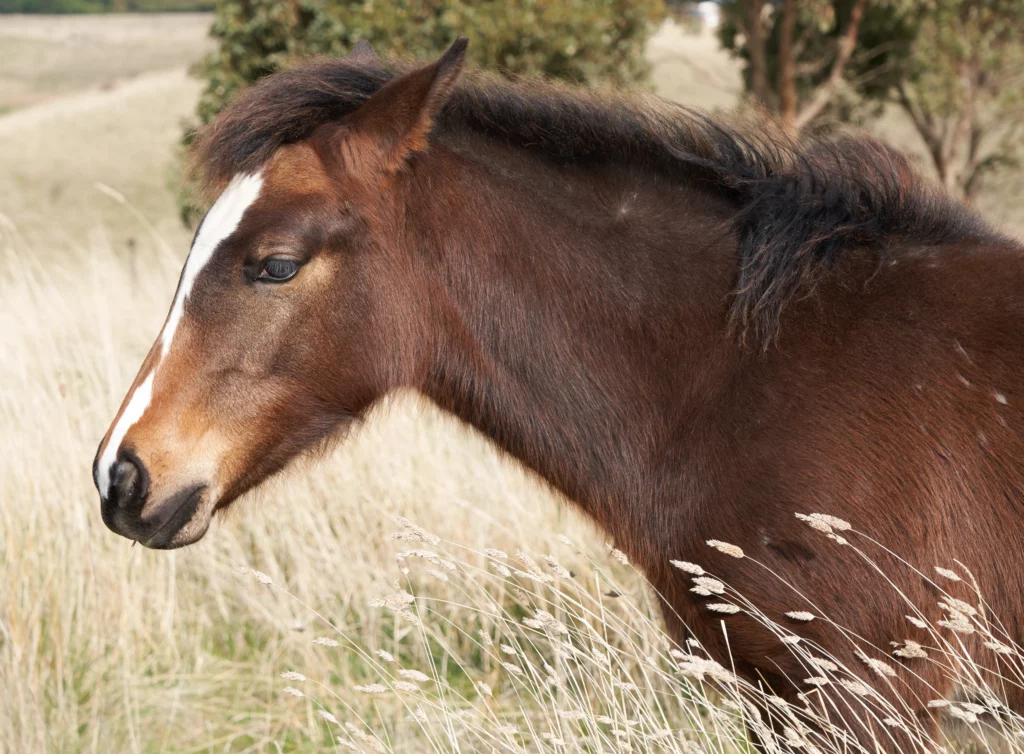Active Engagement With Waler Horses

Angela Tiede, with contribution from Janet Lane, December 2023. Image: Five-month-old filly foal Mollie meets founding Waler advocate Janet Lane at Clarkefield, Victoria, by Susan McNab, July 2023.
Filly foal Mollie is the youngest member of my Waler mob, born in February this year to dam Topsy and sire Virtuoso, also members of my Waler horse family.
It is in particular on Mollie’s behalf that I write this post as she represents the future: will we still be able to find an old-fashioned girl like Mollie in twenty years?
Image by Susan McNab, July 2023. Mollie’s name courtesy of Alice Mary McWilliam.

With no studbook and no market for breeders, once prized Waler horses largely disappeared after mechanisation replaced them in the Australian community and the military from the 1930s. Indeed, horse populations around the world plummeted over the next decades. The resurgence of horses for recreational pursuits with the growth of the middle class from the early 1970s overlooked Australia’s own old-fashioned horse as they were nowhere to be seen by then. Certainly not easily available, if available at all.
Imported and pedigreed horses hence became the new drivers of horse ownership, the development and contribution of the Australian utility horse was consigned to history. The loss of connection to horses in everyday life contributed to a lack of knowledge and appreciation for the elements of what makes a good horse, suitable for Australian conditions: solid bone, sound of mind, and easy to keep, for starters.
Fortunately, founding Waler advocates like Janet Lane and others had not forgotten the Walers. They have dedicated over forty years to trying to re-establish and find a secure future for them. This project is ongoing, as despite every endeavour our Waler horses still have limited visibility to the general public. Ironically, they are also increasingly subject to the pressures of commercialisation, the primary destroyer of breeds around the world.
Active engagement in learning about Walers and sharing that learning as widely and freely as possible is the only way to ensure this uniquely Australian breed can survive in its purest form. We created this website, supported by our Facebook page, to research and post about all things Waler and our utility horse history. Assisted by the extensive archival collections found in such places as our free online portal Trove, the Australian War Memorial, University collections like those held at The University of Melbourne, and State libraries such as the State Library of South Australia we bring buried treasures to a wide audience. We share information from community collections like those found at Collections WA and are privileged to receive personal stories and photographs such as those collected in this post on our website.
We look for information in many other nooks and crannies; this is our active engagement with Walers. Naturally we also have a wonderful resource for stories closer to home, our Waler horses with whom we are privileged to share our lives. The breed we are determined to advocate for so that future generations can continue to enjoy their unique qualities and special relationship with our national soul.
Rare breeds cannot be sustained with passive engagement. Direct action is needed, as demonstrated by those involved with the breed through its history and over the last forty years in particular as a studbook was conceived and established, without which breeds disappear. Building on existing knowledge and widely sharing stories of our Walers will keep momentum going for this unique Australian horse. Utilizing advances in DNA testing is the key to avoiding in-breeding and the genetic bottlenecks that rare breeds must constantly work to prevent.
Every contribution made will support our Waler horse, no matter how large or how small. Documenting family and horse historical information, participating in events such as my regular visits to the Collingwood Children’s Farm, getting our Walers seen out and about more generally, photographing Walers, all help to keep interest alive. Don’t let the most asked question about Walers on the internet be “Does the Waler horse still exist?” or “What is a Waler horse?” Just get involved however you can!
Being active on behalf of the Waler breed requires us to remember that this is not about us, this is about our Waler horse. Breeders in particular, but also purchasers, have a duty of care to be well-informed about what a Waler horse actually is. Intrinsically, Walers cannot survive by simply becoming a Business, they are everyone’s business, the real thing, the only Australian breed.

Image: Mollie thinking, by Susan McNab, July 2023